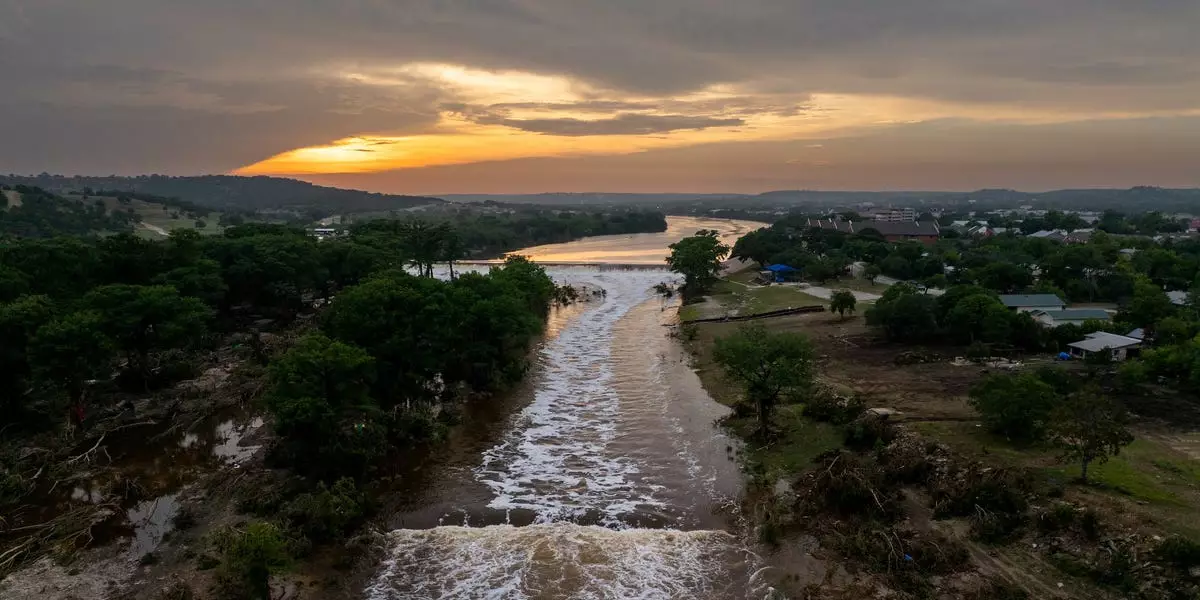The catastrophic flooding in the Texas Hill Country represents a profound reminder of nature’s fury and humanity’s susceptibility. With at least 88 lives lost—including a heartbreaking toll of children—this disaster unearths deeper issues surrounding emergency preparedness, community safety, and climate resilience. While immediate relief efforts are vital, opting for complacency would be a grave mistake. Instead, this tragedy should serve as a catalyst for national introspection and a revamp of existing safety protocols, emphasizing proactive measures over reactive ones.
This event starkly exposes the gaps in warning systems and evacuation strategies. Many victims, especially children in vulnerable settings like the venerable Camp Mystic, found no time to escape a sudden surge that swelled the Guadalupe River by 26 feet within a mere 45 minutes. Such rapid tides underscore the severity of flash floods—an increasingly familiar phenomenon in climate-changing times—and highlight the crucial need for early detection technology and accessible alerts that reach even the most remote or underserved populations. The failure to anticipate and respond swiftly may have cost lives, demanding accountability and smarter infrastructure.
The tragedy’s emotional weight extends beyond statistics; it raises uncomfortable questions about preparedness, community communication, and the societal commitment to safeguarding its most vulnerable. The loss of figures like Camp Mystic’s director, who sacrificed himself in rescue efforts, embodies courage but also underscores the necessity for systemic protections. It is undeniable that better early warning systems, adaptive evacuation plans, and heightened community awareness could have mitigated some of the devastation. The challenge remains: how can a community shield itself effectively against such unpredictable but inevitable nature’s wrath?
Community and Leadership: The Role of Shared Responsibility in Recovery
Leadership must confront its shortcomings head-on, transforming grief into strategic action. The immediate aftermath calls for transparency, accountability, and long-term planning rather than mere speculation or blame. Politicians, emergency services, and local communities must unite to scrutinize existing protocols and innovate more resilient safety nets. What truly distinguishes successful recovery efforts isn’t only the magnitude of aid but the foresight to prevent future tragedies.
Local government figures, like Kerrville’s Mayor Joe Herring, have emphasized the ferocity with which the flood arrived—yet, many residents were unprepared, lacking timely alerts. As communities rebuild, integrating cutting-edge forecasting technology and community-wide education campaigns becomes essential. Regular drills, clear communication channels, and accessible emergency procedures are the backbone of preparedness, especially in regions prone to sudden floods.
Equally important is fostering a culture of resilience that includes mental health support and community cohesion. The trauma experienced by survivors, particularly children and families, transcends physical damages. Initiatives that prioritize psychological recovery alongside material aid can turn this tragedy into an opportunity for collective growth, emphasizing that survival is about more than weathering the storm—it’s about emerging stronger and more connected.
Transformative Support and Collective Action for Lasting Change
While immediate relief efforts—such as those delivered by organizations like the Red Cross, Texas Search and Rescue, and aid groups led by figures like José Andrés—are vital, building a resilient future requires strategic, systemic investment. Support networks must evolve from temporary measures into durable, community-centered solutions.
Funding plays an essential role. The Kerr County relief fund exemplifies how targeted financial support can catalyze recovery, enabling local authorities and nonprofits to operate more effectively. Such models should be replicated and expanded, emphasizing transparency, inclusivity, and long-term planning.
Volunteering, donations, and advocacy are crucial for propelling lasting change. Citizens must demand investments in infrastructure—strengthening levees, improving drainage systems, and installing early warning infrastructure. Equally, fostering education on flood preparedness empowers residents to act confidently when crises strike.
Most importantly, this tragedy underscores that climate change is not a distant threat but an immediate reality demanding urgent action. The increasing frequency of extreme weather events demands a cohesive policy response at national and local levels—not only to rebuild but to reshape our communities into resilient bastions capable of withstanding future storms. The Texas Hill Country’s suffering is a stark call to action: resilience is not an option but an imperative. It is through concerted effort and unwavering commitment that this beautiful region—and the nation—can emerge from tragedy with renewed strength and resolve.

